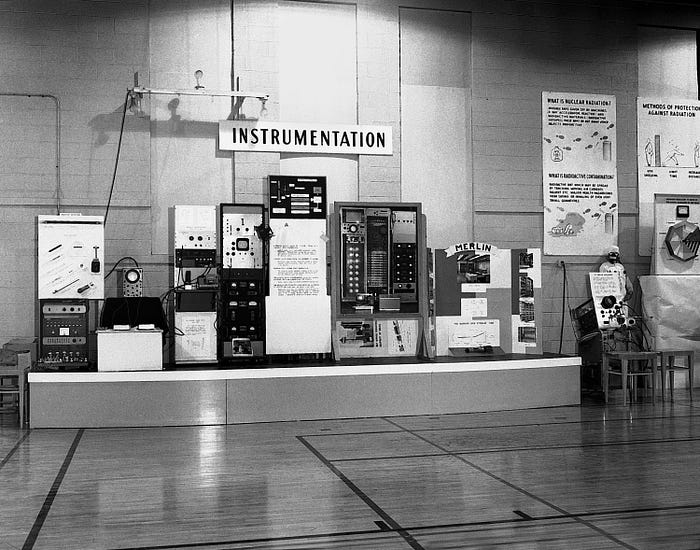The Birth of Video Gaming: How Tennis For Two Changed History
Written on
Chapter 1: The First Video Game Ever Created
In the annals of gaming history, one game stands out as the very first: a rudimentary tennis simulation known as Tennis For Two. This pioneering game was developed using a cathode ray tube display that featured two lines, mimicking a tennis court.

Tennis For Two was invented in 1958 by physicist William Higinbotham. He aimed to make the exhibits at the Brookhaven National Laboratory more engaging for visitors, stating, "It might liven up the place to have a game that people could play, and which would convey the message that our scientific endeavors have relevance for society."
Higinbotham was an accomplished physicist, having graduated from Williams College in 1932 and subsequently earning a PhD at Cornell University. His career included significant contributions to radar technology and the Manhattan Project, where he led the electronics division at Los Alamos from 1943 to 1945. He later joined the Brookhaven National Laboratory, focusing on the peaceful applications of atomic energy.
Each October, BNL hosted annual visitor days, drawing thousands eager to tour the facility. Tasked with creating an engaging exhibit, Higinbotham devised a small analog computer capable of simulating the trajectory of a bouncing ball on an oscilloscope.
Section 1.1: Rapid Development of a Revolutionary Game
Surprisingly, the conception of Tennis For Two took Higinbotham only a few hours, with a couple of days dedicated to assembling the game. His extensive experience with electronic devices made designing the display straightforward. Another technician, Robert Dvorak, spent a few weeks constructing the device based on Higinbotham's designs. After some debugging, the game was ready for its debut.
The gameplay was simple: players adjusted a knob to set the angle of the ball and pressed a button to hit it over the net. While players couldn't miss as long as they timed their button press correctly, poor angling could result in the ball hitting the net or going out of bounds. The game featured basic graphics, with a cathode ray tube displaying two lines (ground and net) and a dot representing the ball. There was no official scoring; players had to keep track of points themselves.
Subsection 1.1.1: The Popularity of Tennis For Two
The exhibit quickly became the star attraction at the Brookhaven National Laboratory, with visitors queuing for the chance to play. In response to its popularity, Higinbotham enhanced the game the following year by introducing a larger display and the option to simulate different gravitational forces, allowing players to experience tennis on various planets.
However, the game only lasted two years, as the oscilloscope was repurposed for other uses. Higinbotham himself moved on to different projects, never considering Tennis For Two to be particularly groundbreaking. He later remarked, "It never occurred to me that I was doing anything very exciting. The long line of people I thought was not because this was so great, but because all the rest of the things were so dull."
Despite his reservations, Higinbotham's creation would be recognized as the first video game, although he never profited from it due to his work at a government laboratory. He held patents for numerous inventions, but this one slipped through the cracks. The first video game patent was eventually awarded to Sanders Associates, which was later acquired by Magnavox in the 1970s.
Chapter 2: A Legacy Beyond Gaming
Higinbotham's contributions to video gaming remained largely unacknowledged until he was called to testify regarding the Magnavox patent. His primary focus was on nuclear weapons and related research, having played a pivotal role in the Manhattan Project and later establishing the Federation of American Scientists.
"Higinbotham died in November 1994, more famous for his video game than his work on nonproliferation," noted the American Physical Society in 2008. While he may not have viewed Tennis For Two as his greatest achievement, today's gaming enthusiasts owe a debt of gratitude to Higinbotham for laying the groundwork for the video games we cherish.